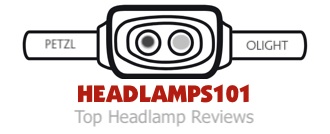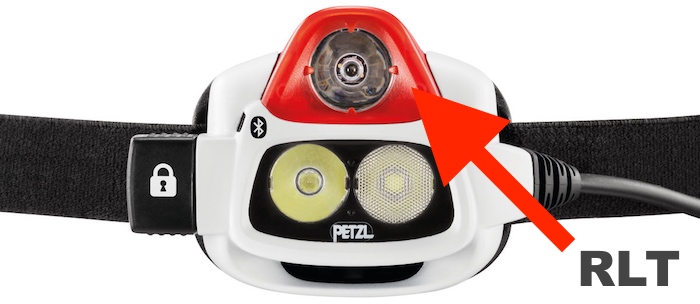[Page updated 1 June 2022]
Petzl Co. developed the first Petzl NAO headlamp with Reactive Lighting Technology (RLT) in 2010. It was an immediate success because the battery length was extended dramatically. You know, with the abundance of LED technology, headlamps have become high-tech items – essential for some outdoor activities like ultra-running, night hikes, camping, or just keeping in your car trunk for emergencies when you have to change a tire on a busy highway.
What Is Reactive Lighting Technology?
RLT now called RL in 2021, combines a light sensor with a couple of headlamps – on the Nao+ there is a wide (flood) beam, and a spotlight beam that combine to make a really nice quality of light (see beam test here). The light sensor measures the amount of light coming back into the headlamp. When more light is sensed reflecting back, the chip reduces the amount of light coming out of the headlamp beams. When the sensor doesn’t find any reflected light – it cranks up the power of the beams to shoot more light in the area being looked at.
In theory, this all sounds very easy. However, it’s rather difficult for one sensor to figure out exactly how much light to put out. The first iteration of the Nao headlamp had 355 lumens and wasn’t used by all that many people, just those who knew the Petzl name and had been buying their headlamps for decades already. Ultra runners were using this headlamp a decade ago. The RLT wasn’t so well developed and many people just opted for the non-RLT lights.
In 2012 the Petzl NAO 2 was released, with 575 lumens and significant improvements in the Reactive Lighting algorithm, resulting in better battery life and much brighter beams.
In 2016 the Petzl NAO 3 and Petzl NAO+ PLUS were released and both have more lumens and possibly a tweak to the RLT – giving even better lighting and battery life. You can now use them with the MyPetzl mobile app to customize your lighting profiles to give the most light possible during a given time period.
How Reliable Is the Reactive Lighting Technology?
This will depend on what exactly you’re using it for. For me, looking for snakes at night on the ground in the water, and in the trees, it is just perfect. When I’m looking up at trees, the light adjusts to cut down the beam instantly. When I look far ahead on the road as I’m riding the motorbike, I can see very well because the peak light reaches 760 lumens.
When I’m walking and looking down on the ground in front of me, the RLT cuts the beams down to around 150 lumens so it’s just the right amount of light for me to see what’s there. If I pull out a guidebook or something to read, the beam switches to an even lower setting – giving just the right amount of light. It’s very good. I’d rate it excellent 99% of the time.
What About the 1%?
When moths or other bugs fly close to the sensor, as they do sometimes at night because I’m walking slow and bugs are collecting, the sensor will cut down dramatically in a quick drop in power. It isn’t often, despite nearly always having bugs in front of my light. It seems to be only with larger moths – 1″ (2.5 cm) or so in length.
Do You Need RLT?
Whether you need it or not depends mostly on whether you care about how long your batteries last. On manual setting – the new Petzl NAO+ lasts for 8 hours on low and 1.5 hours on high setting. For most people, this will be more than enough. However, you can always buy an extra battery unit for the headlamp, which will double your run-time.
See Our Comprehensive Petzl Headlamp Reviews:
- NAO (NAO 2)
- NAO+ PLUS (NAO 3)
- ACTIK CORE
- ULTRA RUSH

